5 Key Features of Apparel Production Management Software
In the competitive world of apparel manufacturing, efficiency, precision, and adaptability are critical for success. Managing production processes effectively ensures timely deliveries, cost control, and superior product quality. This is where software like apparel production management software or apparel distribution software comes in handy.
Designed to streamline workflows and optimize operations, these systems help manufacturers overcome challenges like fluctuating demand, resource constraints, and market competition. This blog highlights five key features that make this software a game-changer for apparel manufacturers.
5 Key Features of Apparel Production Management Software
Apparel ERP production management software optimizes operations, reduces errors, and boosts productivity in the textile industry. With features designed to improve resource management, streamline processes, and meet customer demands, this software helps manufacturers stay competitive.
Here are five key features that enhance operational efficiency and deliver high-quality products.
1] AI Production Planning and Scheduling :
AI-driven production planning and scheduling is one of the major features that has revolutionized how textile businesses operate all their planning and scheduling processes. AI-driven production planning and scheduling in an apparel ERP helps textile manufacturers automate resource allocation, track progress, and predict bottlenecks.
Textile manufacturers often struggle with inaccurate production forecasts, inefficient resource allocation, and communication breakdowns between departments. These issues lead to delays, increased costs, and wasted resources.
With an AI featured apparel production management software, manufacturers can optimize machine utilization, manage workforce shifts efficiently, and account for variables like order size and raw material availability. These intelligent planning tools reduce delays, eliminate waste, and improve overall productivity, ensuring operations run smoothly even during unforeseen disruptions.

2] Advanced Reporting and Analytics :
Knowing every detail regarding the production, schedule and status of each textile process before making a business decision is key. To optimize the decision-making process of textile manufacturers, advanced reporting and analytics tools provide actionable insights into production timelines, costs, and performance metrics.
Textile manufacturers often face challenges such as tracking fragmented data, identifying process inefficiencies, and making data-backed decisions in real time. These hurdles can lead to missed opportunities, increased costs, and slower responses to market demands.
Using an ERP for apparel manufacturers can track key performance indicators (KPIs) like order fulfillment rates, defect percentages, and lead times. These insights allow businesses to identify inefficiencies, forecast future production needs, and make strategic adjustments to improve their bottom line.

3] Customizable Dashboards :
Every apparel business operates differently, with unique processes and priorities. Apparel production management software must be able to provide customizable dashboards, allowing manufacturers to see reports specific to their needs.
Textile manufacturers often face challenges with generic reporting systems that fail to reflect specific operational intricacies. For example, predefined templates might omit critical metrics such as seasonal sales variations or vendor delivery efficiency. This leads to fragmented insights and hampers the ability to make precise, data-backed decisions.
Whether it’s tracking fabric consumption, monitoring seasonal order trends, or analyzing supplier performance, customizable dashboards enable teams to focus on the metrics that matter most. This flexibility enhances transparency across departments, fosters better collaboration, and supports data-driven decision-making.

4] Advanced Reporting and Analytics :
Managing costs is a constant challenge in apparel manufacturing, especially with rising material and labor expenses. A robust budgeting and cost control feature in ERP for textile industry is essential for maintaining profitability while delivering high-quality products.
Apparel manufacturers frequently face challenges like unexpected cost overruns caused by poor expense tracking and inaccurate budget planning. Issues such as fluctuating raw material costs or unplanned overtime labor can threaten financial stability.
With apparel production management software, manufacturers can forecast budgets, track real-time expenses, and monitor cost variances. This ensures that projects stay within financial limits while identifying potential savings. The software also helps calculate production costs accurately, making it easier to price products competitively without compromising on quality.

5] Sales Order Integration:
Sales order integration bridges the gap between customer demand and production planning. This feature ensures that customer orders are seamlessly translated into actionable production schedules, improving efficiency and customer satisfaction.
Textile manufacturers often face challenges like delayed or incomplete order information, which disrupts production timelines and leads to missed deadlines. Managing urgent orders without proper prioritization or resource allocation can further complicate operations.
By using apparel production management software with integrated sales order management, businesses can prioritize urgent orders, allocate resources accordingly, and track order statuses in real-time. This alignment minimizes errors, reduces lead times, and ensures on-time deliveries, fostering stronger relationships with clients and retailers.

The apparel manufacturing industry is evolving, and staying competitive requires investing in the right tools. Apparel production management software offers features like AI-driven production planning, advanced analytics, and cost control that streamline operations, reduce waste, and enhance productivity.
By integrating these tools into their workflows, apparel manufacturers can overcome industry challenges, meet customer demands, and achieve long-term success. Choosing software tailored to your business needs sets the foundation for efficient and profitable production in today’s dynamic market.

